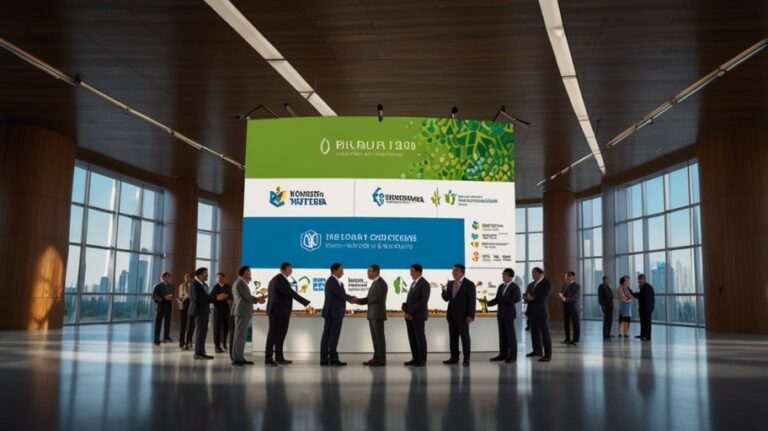The homeowners in the Arrow Creek and Ashbrook subdivisions in Mad River Township have launched a campaign to find a way to have the Ohio Department of Transportation take a second look at a noise barrier before the expansion of I-70 begins this year.
In 2011 property owners and occupants of the two subdivisions, Pleasant Valley Estates Mobile Home Park, Lindair Acres, Rebert Pike and Limecrest Neighborhood (Springfield) received a letter from ODOT explaining that the intention to improve I-70 from the Enon Road Bridge to State Route 72 interchange would be moving forward. Limecrest and Pleasant Valley Estates would benefit from the installation of a noise wall; however no plans for noise reduction would include any of the other locations due to projected costs.
In December of the same year, homeowner Eyvonne Houston of Ashbrook received a letter from ODOT regarding her concerns for being excluded from the noise barrier plan. In the letter, the ODOT Office of Environmental Services “Interoffice Communication” was noted stating that the Federal Highway Administration (FHWA) considers a noise barrier effective if it provides a reduction of 3 dB or more. This was in reference to a 2008 noise analysis of the neighborhood. In 2011, FHWA considered a barrier effective only if it “will provide a reduction of at least 5 dB for 40% of the homes within 500 feet of the barrier”. The letter went on to state that the homes in both Arrow Creek and Ashbrook were on large lots that were not densely developed leaving the properties “unlikely” to meet the “feasibility criteria”.
In a phone interview, Noel Alcala, P. E., Noise and Air Quality Coordinator for the ODOT Office of Environmental Services explained that the 2008 noise study remains valid. He stated that the traffic along the interstate would need to double to increase the noise levels 3 dB. According to the information provided by Alcala, the noise reading results would be similar for both subdivisions. Reading made available to the Enon Eagle came in at 67.0 decibels at 4325 Lone Wolf and 56.7 at 4303 Lone Wolf, both in Arrow Creek.
Alcala explained why only 19 homes rather than the 56 properties that Arrowcreek resident Mary P. Boyle noted in her interview with the Enon Eagle were considered in making the decision on cost of a barrier. According to Alcala, only the “first two rows of homes in the communities” are considered when making the decision. “Anything beyond that wouldn’t typically benefit from a noise wall” said Alcala.
Alcala explained that the FHWA guidelines allow for $35,000 per home in the construction of a noise barrier. The residents of the subdivisions find a flaw in the calculations and expressed their concerns during our interview. According to Alcala, the cost per home (19) in the two subdivisions would be $53,000, well beyond the FHWA allowance. The cost for Lindair Acres was estimated at $92,000 each for the 10 properties and $60,000 each for the 3 properties on Rebert Pike. Calculations for Pleasant Valley Estates with 98 residences at a cost of $8,163 each.
Another argument raised by the property owners is that they are as close to the roadbed as the Pleasant Valley Estates property. According to ODOT, that is not the case. Property owners also question how ODOT can justify a noise barrier for the lots in Pleasant Valley that are vacant. Alcala explained that the Mobile Home Park would need to cease to exist before the barrier could be reconsidered for this location noting that in this case, a home could be added or removed at any juncture.
The residents that met with the Enon Eagle, led by Mary “Pat” Boyle explained their frustrations regarding the situation. Those living on Tree Line Avenue have all lived in their homes since they were constructed in the late 1990’s. One resident Doug Lieurance explained that he spoke to a representative of ODOT prior to purchasing his home as a second owner and was told that a noise barrier would in fact be constructed. Lieurance did not have written confirmation of the plan. In the interview we asked Alcala about the responsibility of the developer to provide an earth mound barrier or a wall. He explained that this is not a common practice by a developer and throughout the state homeowners are finding that the cost is something builders do not wish to incur. Many buyers are resorting to adding a mound or barrier as part of their construction plan at their expense.
The property owners believe that the amount of traffic has increased along the interstate since 2008. They are frustrated that the existing vegetation offers little if any buffer from the noise that occurs when a semi uses their Jake Brake or drivers slips off onto the side and active the noise grooves in the pavement. Many are uncomfortable enjoying their patio due to the fumes coming from the traffic and also cannot open their windows. They anticipate additional noise and dirt coming from the contractors when construction begins to increase the roadway to 6 lanes.
According to Alcala, the project has already been funded and no changes will be considered. Boyle provided a copy of a letter that she received from State Representative Ross McGregor which included a letter from Michael Evans of ODOT which states that a barrier in the vicinity of Timber Line and Lone Wolf Avenues would be “approximately one-half mile in length and would benefit 19 or fewer homes”. He goes on to state that the cost would be approximately $1,000,000, “which far exceed the cost reasonable criteria of $35,000 per benefiting unit”.
The residents attended the Mad River Township Trustee meeting on Monday evening, February 3 in hopes of gaining some support for their petition to have a new noise study done. The trustees offered to assist them in locating the proper State of Ohio office to which they might make an appeal for further studies. Boyle has also contacted Clark County Commissioner Rick Lohnes in hopes of finding a way to appeal the decision.
For now ODOT is moving forward with the approved contracts for widening the interstate and limiting the noise barrier installation leaving the frustrated property owners to ponder how they might improve conditions in their neighborhood without public funding support.






